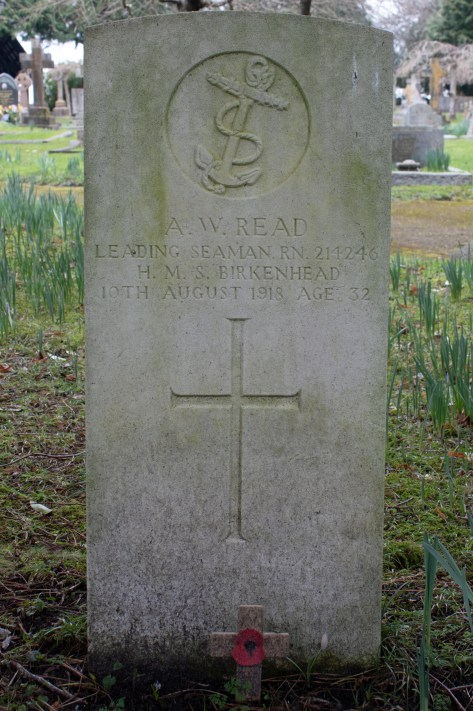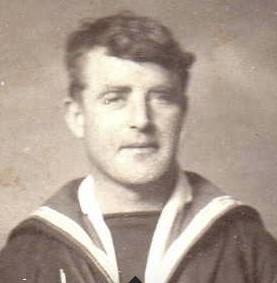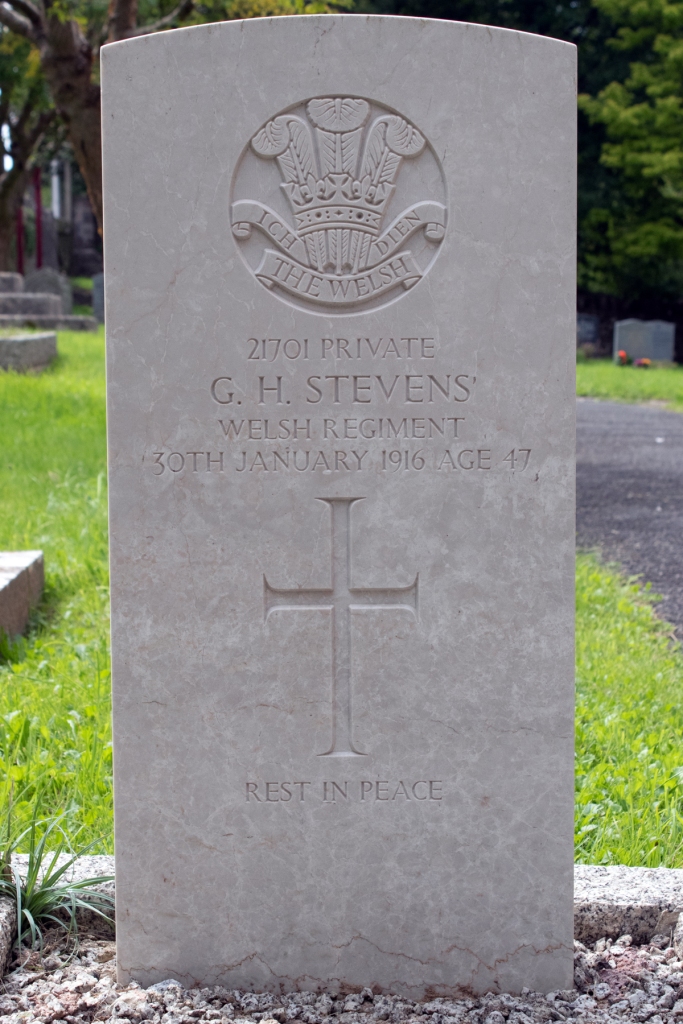
Arthur William Read was born on 5th February 1886 in Lyndhurst, Hampshire. The fourth of nine children, he was one of five sons to James and Mary Read. James a builder’s labourer-turned-yardman, although his son wasn’t to follow in his father’s footsteps.
Instead, Arthur rook on work as a baker’s boy, but this was not enough for him. He sought a career at sea and, on 10th April 1901, he took a job in the Royal Navy. Given the rank of Boy 2nd Class because of his age, he was sent to HMS St Vincent, the shore-based training establishment in Devonport, Devon. Over the next eighteen months he learnt the tools of his trade, and was promoted to Boy 1st Class after just ten months.
On 5th February 1904, Arthur turned 18, and came of age. Now able to formally enlist in the Royal Navy, he took that opportunity, and was given the rank of Ordinary Seaman. His service papers show that he was 5ft 5ins (1.65m) tall, with light brown hair, blue eyes and a fresh complexion.
At this point, Ordinary Seaman Read was serving on board the battleship HMS Irresistible. She would be his home for two years and, just a couple of weeks before changing vessels, he was promoted to Able Seaman.
Arthur would serve up to and during the First World War. He was assigned to a total of seven ships after the Irresistible, returning to what would become his home port, HMS Victory in Portsmouth, Hampshire, in between voyages. His character was regularly noted as being very good, while his ability was repeatedly found to be superior. By 1st October 1915, with war raging across Europe, he was promoted again, to the rank of Leading Seaman.
Away from his seafaring, Arthur had found love. In the last quarter of 1909 he married Alice Philpott. Sadly, details about her have been lost to time, but the couple would go on to have two children – Ivy and Gladys.
When war came to Europe, Arthur’s younger brother Harry stepped up to serve. He enlisted in the Middlesex Regiment, and was assigned to the 12th Battalion. Private Read was caught up in fighting on the Western Front, and was killed in action on 25th April 1916. He is buried in Bronfay Farm Military Cemetery, in Bray-sur-Somme, Picardie.
Leading Seaman Read, meanwhile, was continuing his naval career. From November 1916 he was assigned to the light cruiser HMS Birkenhead. Used to patrol the North Sea, she had come away from the Battle of Jutland unscathed.
As the war entered its closing months, Arthur’s health was becoming impacted. Suffering from diabetes, he was admitted to the Royal Naval Hospital in Edinburgh in summer of 1918. The condition was to better him, however, and he passed away on 10th August: he was 31 years of age.
The body of Arthur William Read was taken back to Hampshire for burial. He was laid to rest in Lyndhurst Cemetery.
After her husband’s death, Alice was left to raise two children under 5 years old. Unable to do this without support, on 8th July 1920, she married Jack White. A Chief Petty Officer in the Royal Navy, it is unclear whether his path had ever crosser her late husband’s. The following year’s census found her and her two daughters living in a house on Clarence Road in Lyndhurst: her husband was away at sea.

(from ancestry.co.uk)




















